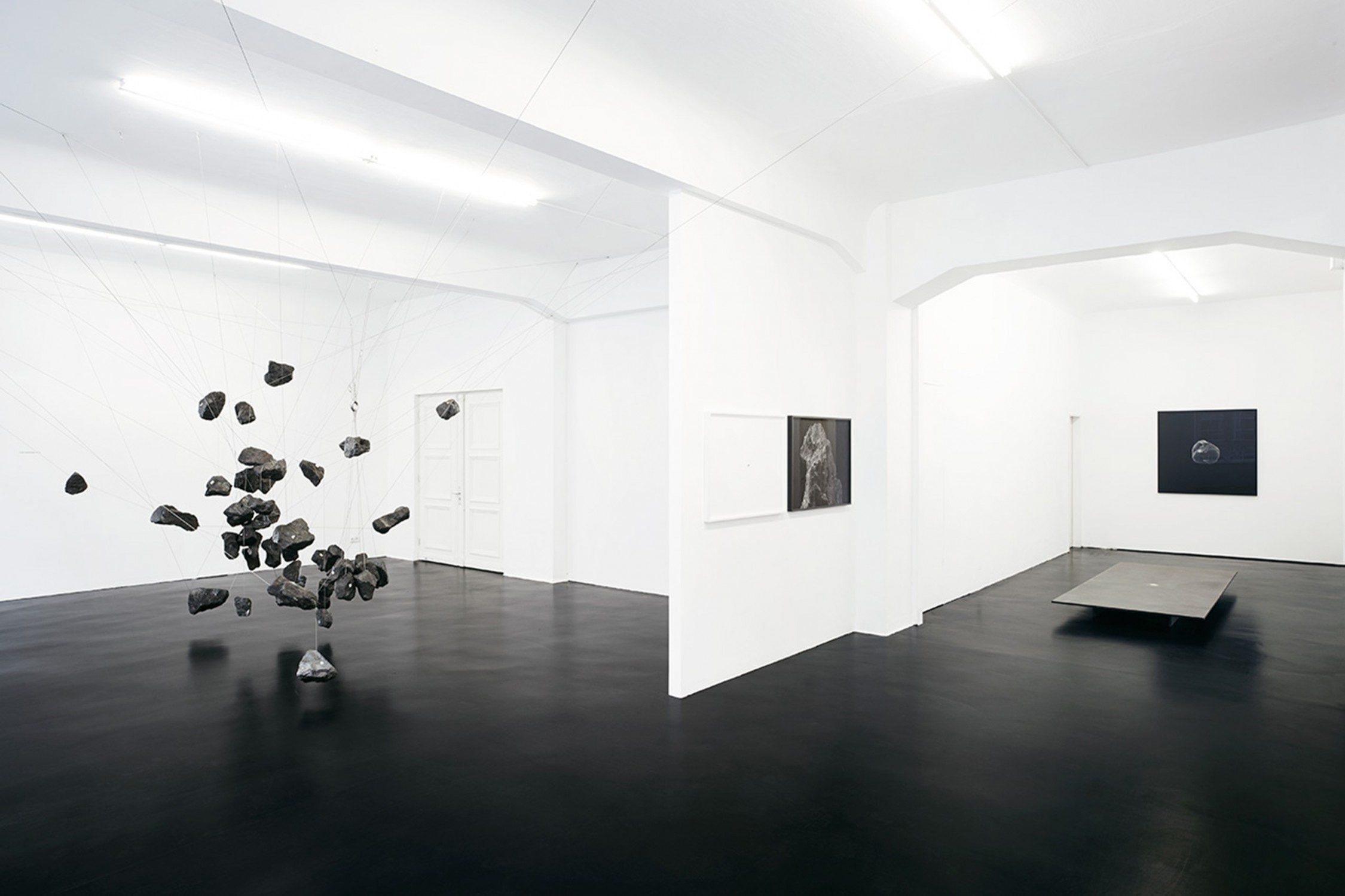

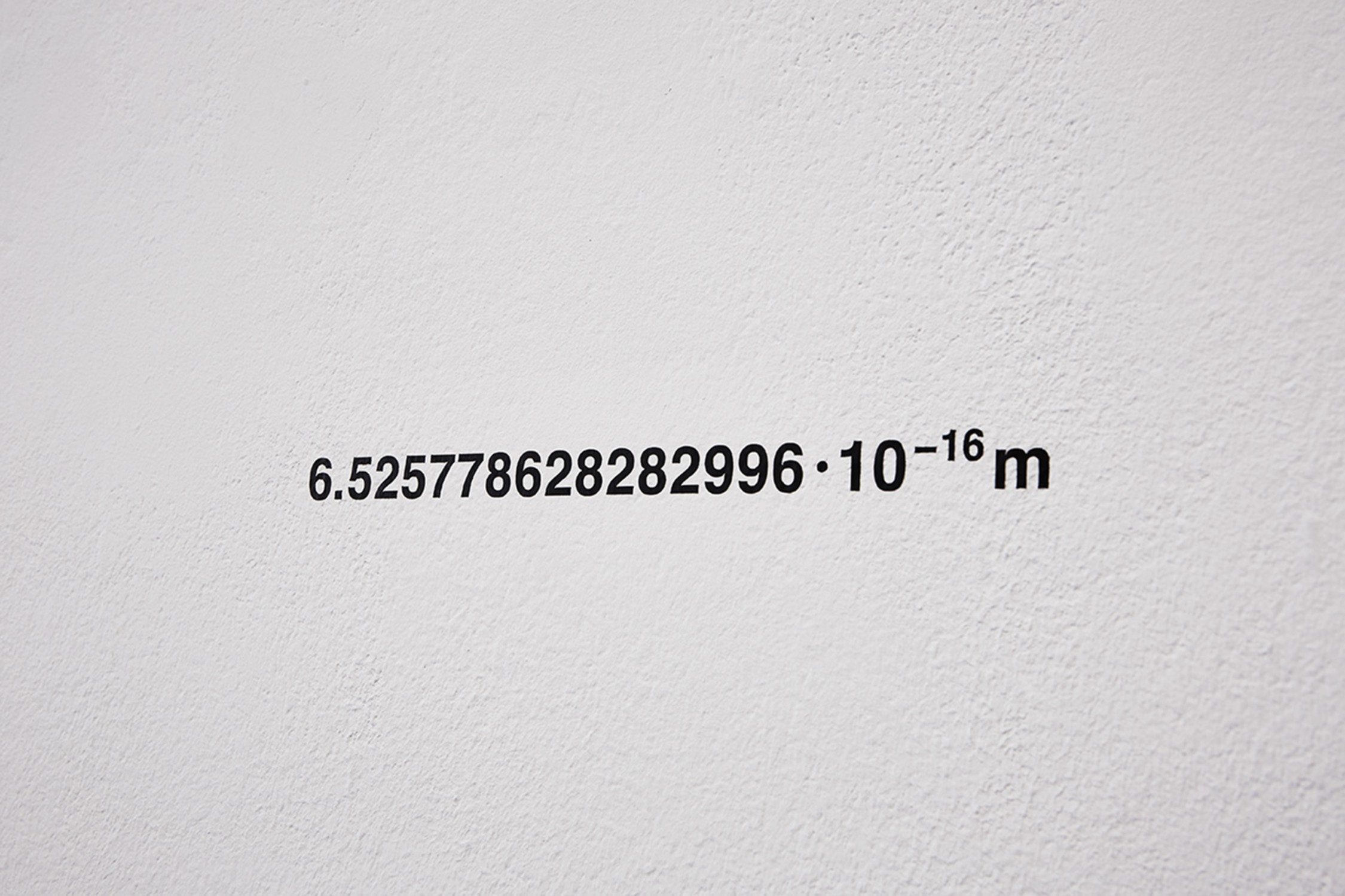

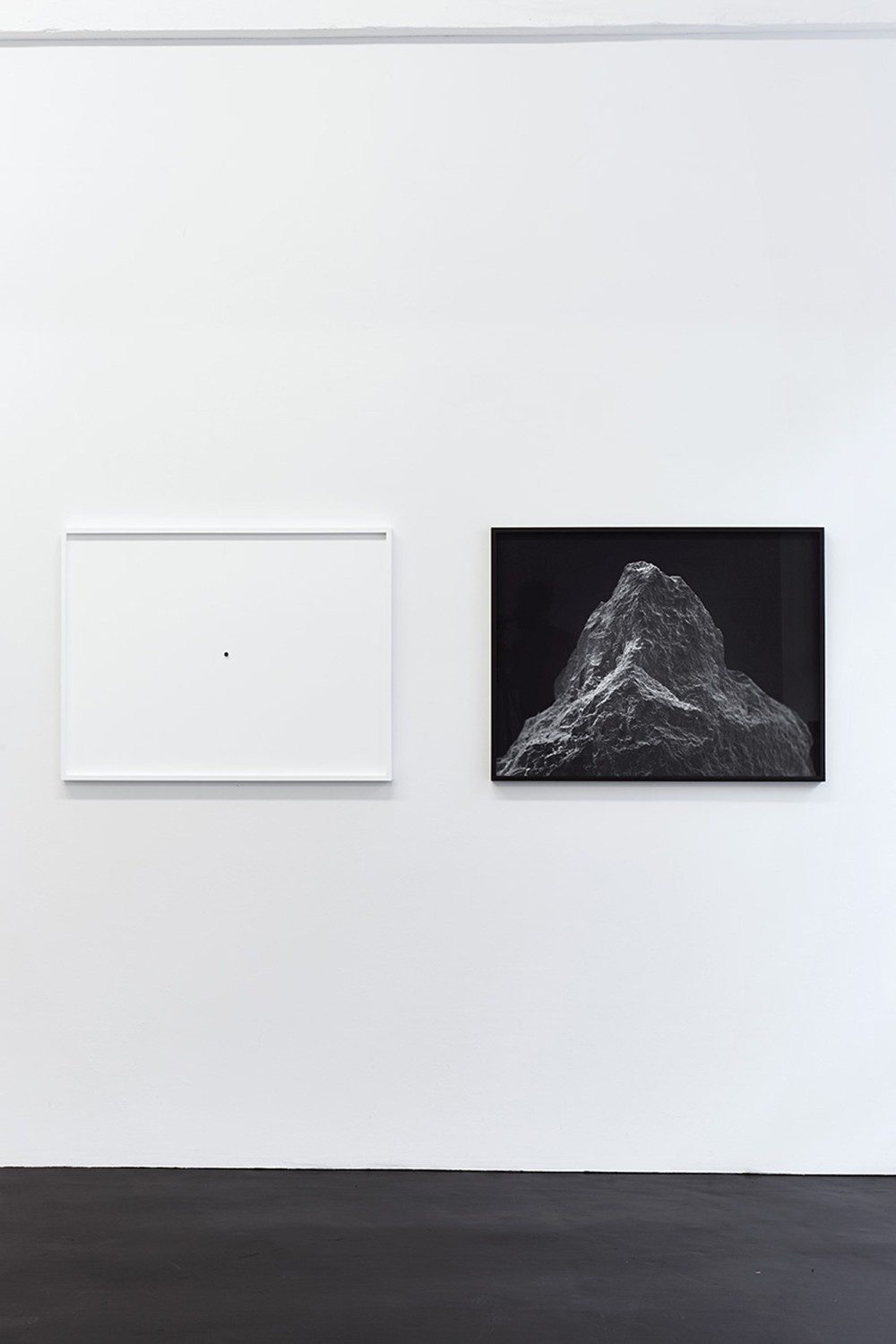
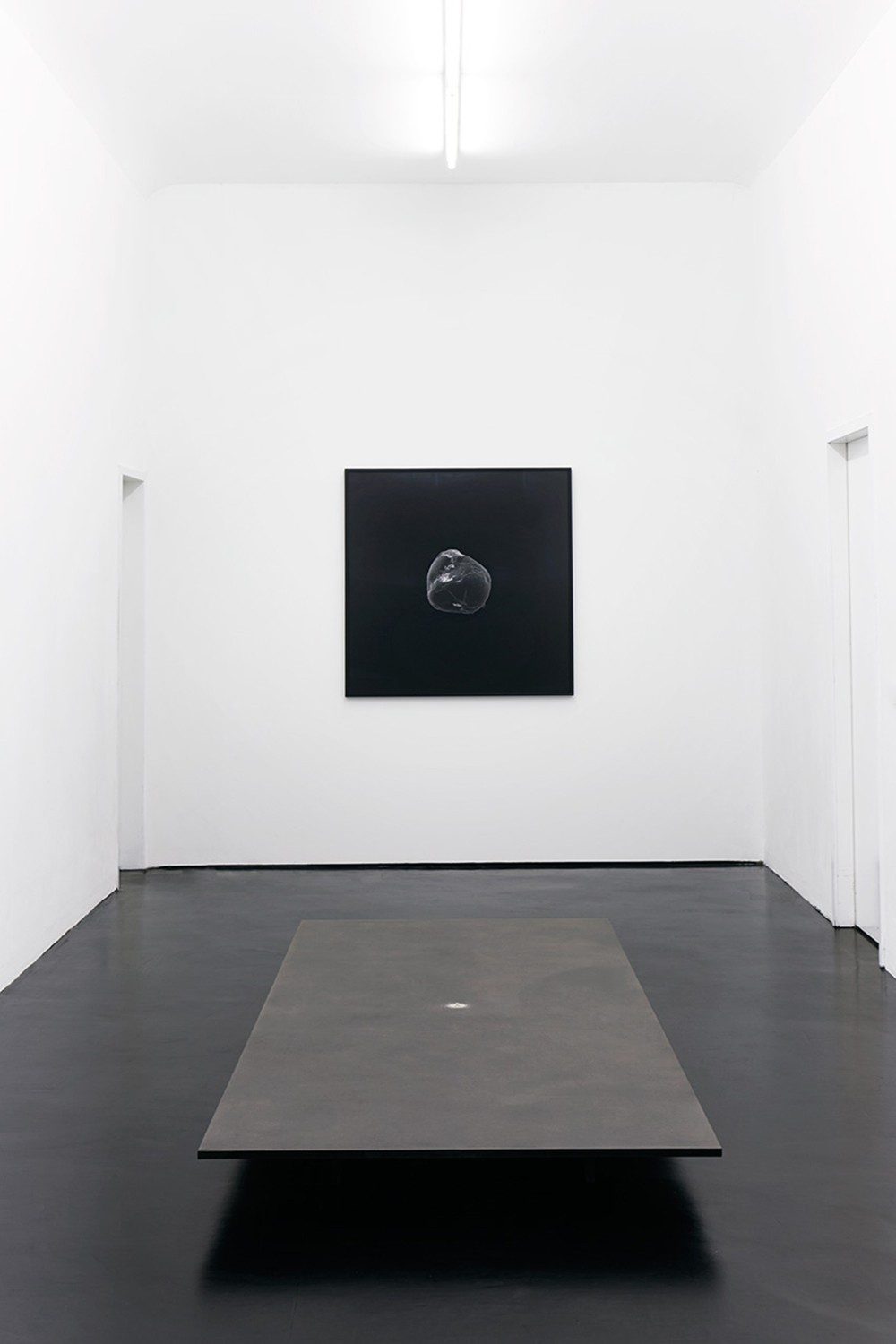
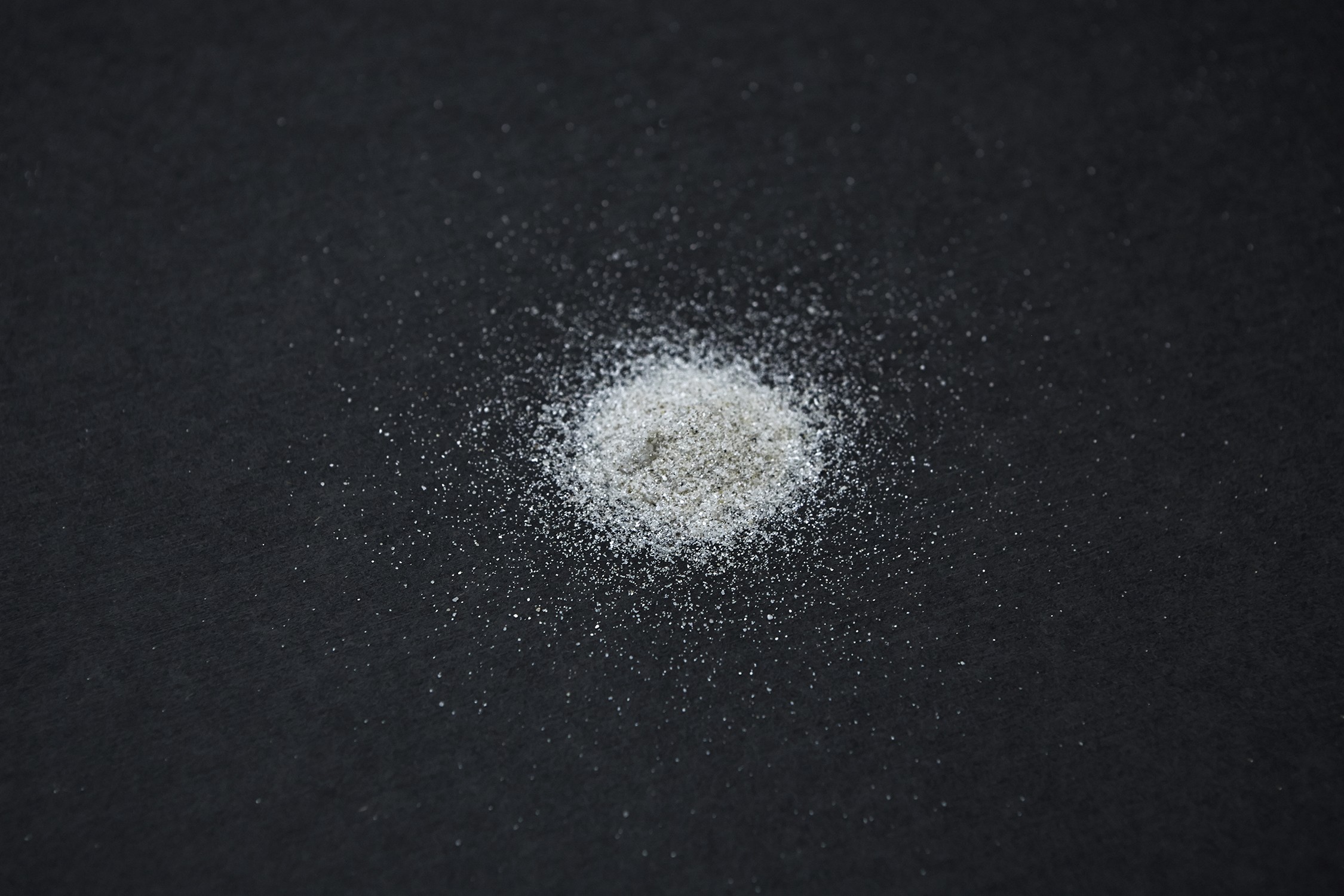
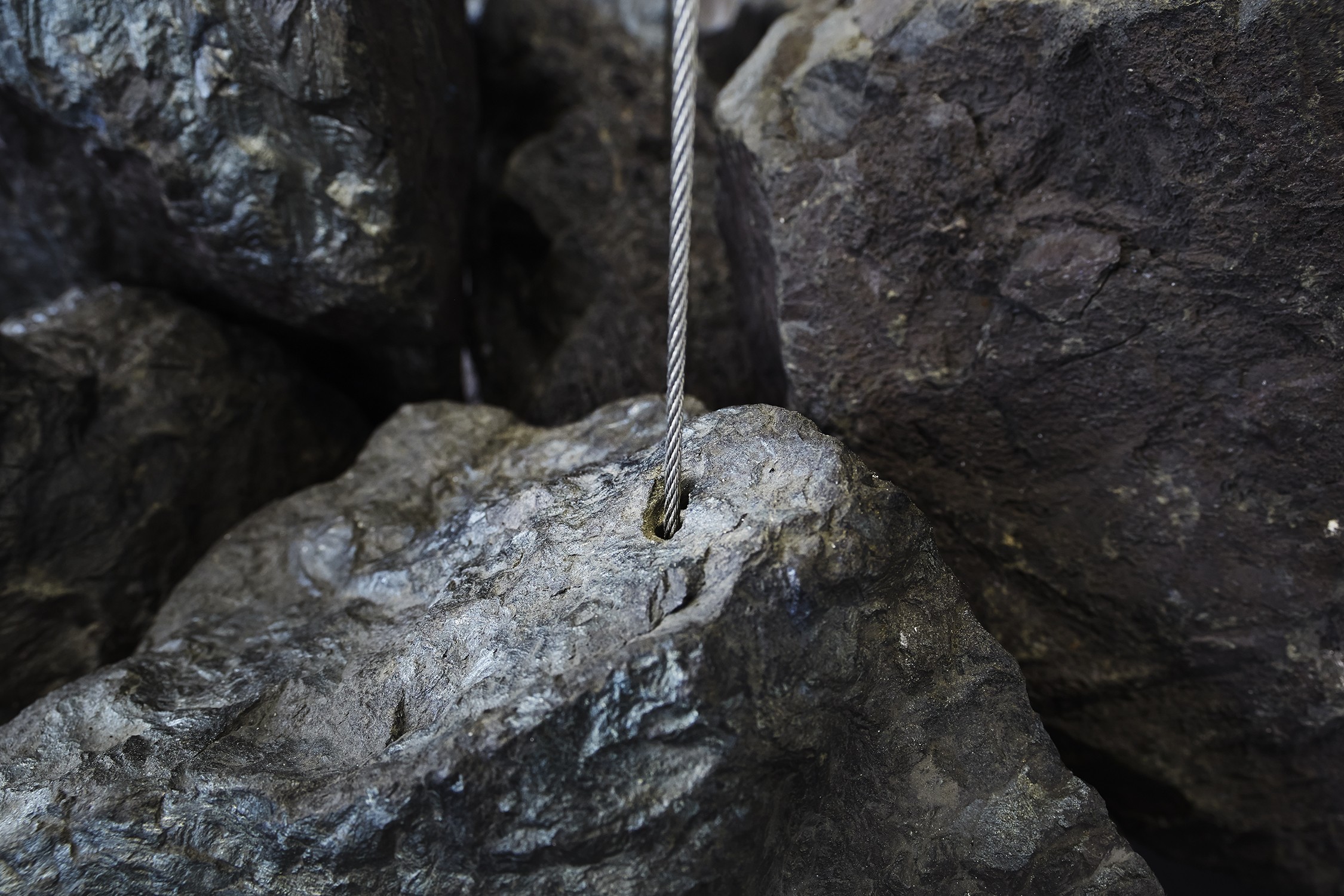
alexander levy is pleased, after Neuordnung (2010) and Tür und Stern (2012), to be able to present the third solo exhibition of Felix Kiessling in the gallery with Ausdehnung. In addition to an expansive installation, the to date most extensive Weltwasserspiegelsenkung, the focus of the exhibition is for the first time on Kiessling’s scanning electron microscopes.
For Weltwasserspiegelsenkung, Felix Kiessling raised riverbed stones from the Elbe, guyed them in the gallery space, elevated and suspended them, and then arranged them to create an expansive installation. The rearrangement of the stones corresponds to a drop in the global water level by a tiny, hardly comprehensible, yet calculable magnitude. Weltwasserspiegelsenkung thus brings two levels together: the intervention in the Elbe (the removal of a heavy load); the impact of the intervention (its “transposition” to the global level); the exact calculation of the impact of the intervention (its translation into mathematics); the presence of the intervention in the exhibit space (the constellation of the riverbed stones, their surfaces, etc.). A number at the boundary with nothing (a fraction of the diameter of the core of an atom); an immense load laboriously suspended in the air: In Weltwasserspiegelsenkung, opposites are consolidated and the scales intersect. At the end of the scale. At the outermost edge.
At the outermost edge of the Earth, just before the ocean, where it doesn’t go any further, one can only go into the “depths”, change the scale, become smaller. When one goes in deep enough, so far that the eye can no longer follow, another landscape will finally appear: A nano-topography. In order to examine the outermost edges of the Earth, the northernmost points of geographical formations, Felix Kiessling went off into the world to remove promontories. With technically sophisticated procedures, he bombarded the peaks with electrons, recorded this topographically in nano-scale and created large-format images. Endpunkt Skagen, for example, shows the topography of the northernmost grain of sand of Denmark, which can be seen in the exhibit enlarged thousandfold. The real, tiny grain of sand is placed in contrast to its scanning electron microscope: two levels of one common reality that hardly seem to fit together.
Endpunkt Lalibela shows the northernmost point of a church in Lalibela, Ethiopia, which was shaped as a high, monolithic block from the surrounding rock formation. “Bete Giyorgis”, carved from the rock in the form of a cross in the 13th century, is one of the most expansive monolithic structures created by humans in the world. In Endpunkt Lalibela, Felix Kiessling therefore surpasses his own principle of examining “natural” boundaries with his surveying of the northernmost point of the church. Surveyed here is a block that was removed from nature 800 years ago and transformed by an advanced civilization: the last particle of a world heritage site.
“The surface of the Earth […] exceeds any map that attempts to register it, because there are always more connecting lines to draw.”
Eyal Weizman
In Ausdehnung, the perspective of the satellite, the view of the globe “from the outside” meets the highly focused look through the microscope. Felix Kiessling draws connecting lines from the large to the small, from the small to the large, from the boundaries of a landscape to the landscapes in the boundaries. The surface of the Earth is charted into the depths. The structure of the Pars pro toto: each particle contains a world. The global is transferred to the lab, the lab into the exhibit space. And the exact tilts into the aesthetic. Hard science let loose.
Felix Kiessling (*1980 in Hamburg) lives and works in Berlin. Following a four-year program of study at the Institut für Raumexperimente (Institute for spatial experiments) (University of the Arts, Berlin), he was the master student of Prof. Olafur Eliasson in 2013-14. His works are shown in, amongst other venues, the Deutsches Architektur Zentrum (Berlin, 2013), the Haus der Kulturen der Welt (Berlin, 2011), the Museum of Contemporary Art (Tokyo, 2011),the Schinkel Pavillon (Berlin, 2013) and the Winzavod Centre for Contemporary Art (Moscow, 2014). In 2009, he founded the “Das Numen (The numen)” collective together with Julian Charrière, Andreas Greiner and Markus Hoffmann.